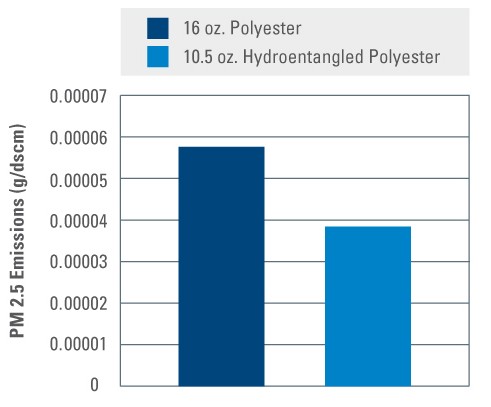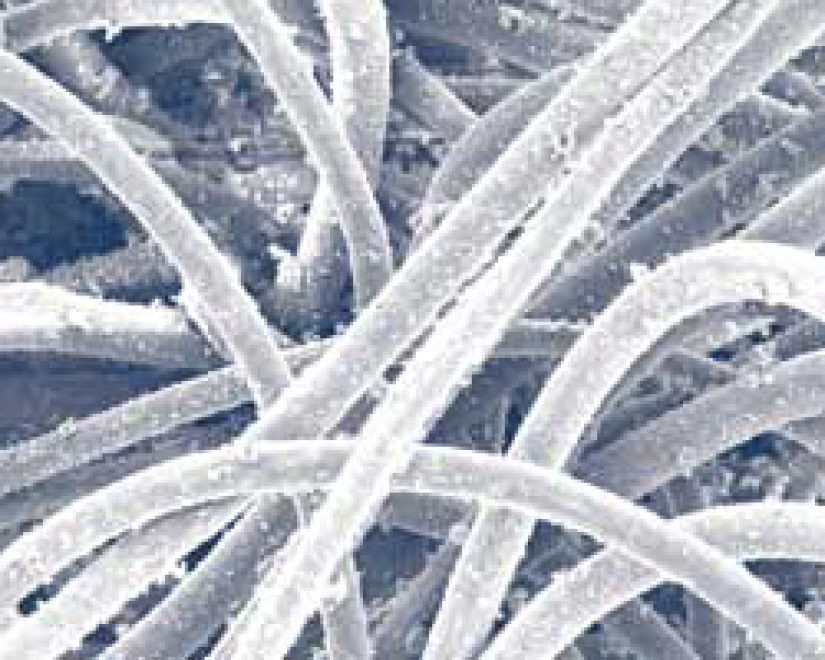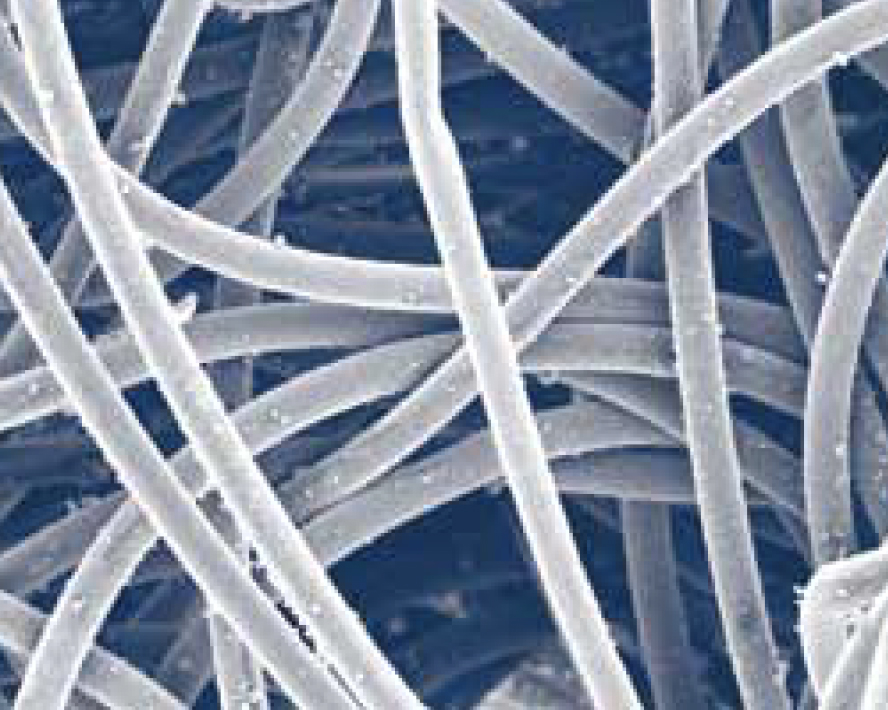Five Reasons to Consider Hydroentangled Bags
for Enhanced Baghouse Performance
Hydroentangled polyester baghouse filters can increase performance while remaining an economical choice – Read 5 reasons why.
By Joe Kiolbasa, Donaldson Torit Product Manager
Filtration Needs of Baghouses
There have been many articles published that focus on advances in industrial dust collector filters, but the lion’s share of them focused on dust collectors using cartridge filters. While collectors with cartridges offer many advantages, there are thousands of facilities in North America still buying and operating baghouses. This paper addresses the filtration needs of these baghouse owners and operators.
Different Bag Materials for Different Applications
Baghouse filters can be made of a wide variety of materials. If the airstream going into the collector is above 275°F then P84, Aramid, Ryton and other materials can be considered. If there is high moisture content in the airstream, as when filtering air from dryers, or if high acid or alkali conditions exist in the air stream, polypropylene may be an option. But each of these applications is special, requiring bags made of special materials.
5 Reasons to Consider Hydroentangled Polyester Bags
For most applications, common polyester has been the media of choice in baghouse filters because it does an acceptable job of filtering air, it lasts an acceptable period of time, and the first installed cost is economical. There is, however, another type of polyester bag filter that can provide better baghouse performance and still do it economically. These bags are made of hydroentangled polyester, and following are the top five reasons to consider them:
1. More Uniform Material
More uniform media – Most common polyester bag filters are made of a felt manufactured via a needling process. In this process, a large set of needles with barbs rapidly moves up and down through a bed of media fibers to entangle the polyester fibers together to create the felt.
In 1976, DuPont introduced a new process where micro-fine water jets were used to entangle the fibers together. This process of hydroentangling, or spunlacing, provides a stronger, more uniform material with smaller pores than common needled felt polyester.
2. Longer Filter Life
Longer filter life – When dust is filtered in a baghouse using hydroentangled bag filters, a much larger percentage of the dust is captured on the outer surface of the bag than is captured on the outer surface of the common polyester bag filter. This phenomenon is known as surface-loading. When it comes time to pulse the dust off of the bag via a reverse pulse of air inside the bag, the surface-loaded dust pulses off of the bag easily and drops into the baghouse hopper. When bags clean better with effective pulse cleaning, there is less restriction of airflow (less pressure drop) through the bag. Proper airflow means the baghouse continues to do an effective job of filtering dust from air.
Conversely, filters made with common needled felts are not as uniform in pore size or structure as are hydroentangled bags. They are likely to have many larger pores. Because of this, dust collected on these bags tends to imbed deeper into the fabric. This is known as depth-loading, and when it comes time to cleaning these bag filters, it is far more difficult to pulse the dust out of them. This results in dirtier bags and a higher pressure drop that rises more quickly.

Lab and field results have consistently shown hydroentangled bags last longer due to better surface-loading and pulse cleaning. In fact, hydroentangled bags have been known to last two to three times longer than common polyester bag filters.
3. Reduced Emissions
Reduced Emissions – Looking at the previous pressure drop chart, one might assume that it is easier for air to pass through the hydroentangled bags and, therefore, more dust must be getting through these bags too. But that is not the case. Hydroentangled bag filters actually emit up to 30% fewer particle emissions than common needled felt bag filters on particles 2.5 microns and smaller. Again, this is due to hydroentangled polyester’s smaller pores and more uniform material. This can be a big benefit to plant managers using baghouses to keep their facilities clean and to meet EPA emissions standards.

4. Reduced Energy Costs
Reduced Energy Costs – Another benefit of the surface-loading and lower pressure drop of hydroentangled bags is the reduced fan energy used to draw air through the baghouse. Fans will not have to work as hard because there is less restriction in the bag filters. Further, if fans are equipped with an EISA-compliant motor and use a variable frequency drive, the annual energy savings can be quite dramatic. The example below shows energy consumption reduced by over $6,000 per year using hydroentangled bags on one collector with 484 bags. Obviously, the more collectors a facility has, the greater the potential energy savings.
Needled Polyester Bag Clean Air Side (300x)

Hydroentangled Polyester Bag Clean Side (300x)

These photos were taken with a scanning electron microscope of bag media used in a collector that was filtering fly ash. The bags were removed after 2,700 hours of use. Air-to-media ratio was 4.5 to 1. Pressure drop after 2700 hours of operation was 6 in. (152.4 mm) on polyester bags and 2 in. (50.8 mm) on hydroentangled bags.
5. Reduced Maintenance Costs
Reduced Maintenance Costs – One of the least favorite jobs a plant employee has to do is replace bag filters in a baghouse. It’s a dusty, dirty job and, depending upon the time of year, it might need to be done in extremely hot or cold weather conditions. In addition to being unpleasant, it can be costly to the company that owns the baghouse. Often times this work has to be done when the plant is not running since the baghouse needs to be turned off while the bag filters get replaced. This can result in weekend or holiday labor rates, which make the project even more expensive.
Field experiences have shown hydroentangled bag filters can last two to three times longer than needled felt polyester bags when replacement is due to excessively high pressure drop. Assuming hydroentangled bags last twice as long as needled felt bags and factoring in labor and bag costs, a plant could save more than $3,500 each time its employees replace hydroentangled bags in a 484 bag baghouse. Once again, if a facility has multiple baghouses, the savings can add up quickly.
Summary
Many companies are still using baghouses to keep their facilities clean. By asking for hydroentangled felt baghouse bags, plant managers can keep their facilities cleaner while reducing their energy and maintenance costs.
ReferencesKamath, M.G., Dahiya, A., and Hegde, R.R.(2004, April). Spunlace (Hydroentanglement)Rupp, J. (2008, July/August). Spunlace or Hydroentangled Nonwovens. Retrieved from http://www.cottoninc.com/product/NonWovens/Nonwoven-News/NonwovenNewsArticles/2008/Spunlaced-Or-Hydroentangled-Nonwovens/Gupta, H. (2013 April). Spunlace Technique (Hydroentanglement: A Technique of Non-woven Production). Retrieved from http://www.slideshare.net/himanshugupta3139/spunlace-hydroentanglement

AST Canada has been helping clients find solutions for their unique Dust, Mist & Fume Collection needs for more than 40 years.
We can help you too.
